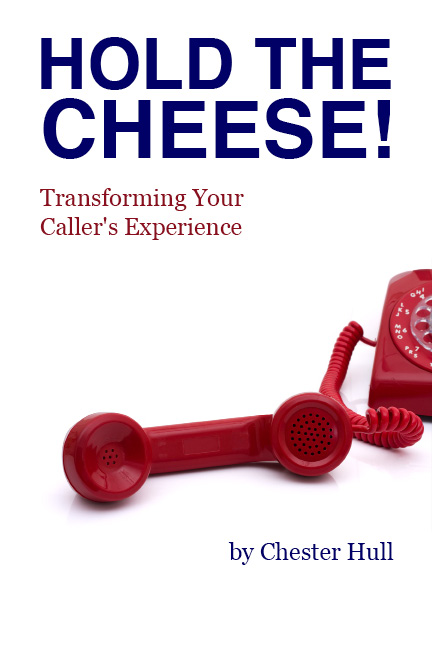 Here we are at the final post in this series of “10 Rules of Aut0-Attendants”…
Here we are at the final post in this series of “10 Rules of Aut0-Attendants”…
But just because this is the last rule, doesn’t mean there aren’t others. If you’ll listen, you’ll probably come up with some more additions on your own. If so, I’d love to hear about them in the comments!
This rule applies almost more to On-Hold messages than to Auto-Attendants. Both of these areas of phone messaging need to focused, concise, and clear.
Without further ado…Melanie Polkosky’s 10th Rule of Auto-Attendant design(From “The Hooptedoodle of Phone“):
10. Try to leave out the part that users tend to ignore: Think of what you ignore when you’re talking on the phone: long, extended stories that meander around, spiraling off into subplots and minor characters, taking up your precious time. What the speaker is doing is perpetrating a monologue where a dialogue was supposed to exist. I’ll bet your mind wanders through most of it.
And, like Leonard, my most important rule sums up the 10: If it sounds like writing, I rewrite it.
If users will ignore it, there is no sense in having it in there. You just need to determine which parts they will ignore!
It’s easy really…callers ignore what isn’t relevant or helpful to their goal.
Sometimes businesses want to fill up the messaging with things that the business cares about, rather than what the caller cares about.
If your messaging doesn’t pass the “so what?” test, you probably need to have it re-written.
If it sounds like every other company out there, it probably needs to be rewritten.
Try delighting your callers instead!
It’s been fun sharing these 10 points with you. Many thanks to Melanie Polkosky.
If you want to learn more about your Caller Experience, visit http://prosoundusa.com/evaluation
 There are times when your Auto-Attendant or Integrated Voice Response (IVR) system simply isn’t going to provide what your caller wants.
There are times when your Auto-Attendant or Integrated Voice Response (IVR) system simply isn’t going to provide what your caller wants. This post is guaranteed to be legalese-free!
This post is guaranteed to be legalese-free! Using technical jargon is one of the easiest ways for a business to get tripped up in any of their marking or customer communications. Technical jargon…insider lingo…industry acronyms…it all comes from what I call “The Curse of Knowledge”.
Using technical jargon is one of the easiest ways for a business to get tripped up in any of their marking or customer communications. Technical jargon…insider lingo…industry acronyms…it all comes from what I call “The Curse of Knowledge”. In order to read this blog post, please choose from the following options:
In order to read this blog post, please choose from the following options: One of the first things to look at in an Auto-Attendant design is eliminating branches. The more branches there have to be, the more likely you will be frustrating your caller.
One of the first things to look at in an Auto-Attendant design is eliminating branches. The more branches there have to be, the more likely you will be frustrating your caller. When it comes to writing for Aut0-Attendants, there’s a lot that can be learned from rules of writing in general. Rules of good writing shouldn’t be simply thrown out the door just because the application is to fit inside the constrains of a phone system.
When it comes to writing for Aut0-Attendants, there’s a lot that can be learned from rules of writing in general. Rules of good writing shouldn’t be simply thrown out the door just because the application is to fit inside the constrains of a phone system. Facebook
Facebook LinkedIn
LinkedIn Twitter
Twitter



